Mike Jastrzebski's Blog, page 22
June 5, 2014
This is only temporary…

C.E. Grundler
I mean it! For real. Just a temporary flight of stairs up to the boat. I know how it looks, but trust me, it’s not staying that way.
You see, I have these guys…
…and they like going everywhere with me. Walks, road trips, vineyards, beaches, woods, you name it. If I’m going somewhere, they figure they’re coming along. Except for that strange place I disappear to all the time, and NEVER bring them.
You see, they’re each roughly sixty pounds, and I’m pretty strong, but not strong enough to haul them up a ladder. That wouldn’t end well for any of us. But there happened to be an old set of stairs in the corner of the shed, upside down and forgotten, tall enough to just about reached the cockpit door. Add a little scrap lumber, and whala! My crew can now board. Not that they’re doing much of anything useful once aboard, but as company goes, they can’t be beat. And now, so long as there’s no grinding or other nastiness on the day’s agenda, my boys are going to the boat with me.
I wonder if Rex (fuzzy, brown, short legs) remembers this thing once (and eventually will yet again) floats. As for Loki (taller, black) it’s just a really strange looking house — but at least it has a couch, so he’s cool with it.
Now, if only I could teach them to operate power tools and lay up fiberglass…
Share on Facebook
May 30, 2014
A new chapter
by Christine Kling
So I’m sitting on an airplane in Orlando en route to LA, my fiancé beside me and our two doggy flight bags with Ruby and Barney at our feet. Just a couple of hours ago I signed the papers to sell Talespinner (click on the photo above to go to a slide show of photos of my little boat) and said my final good-byes. From the day we put up the ad until today it was 6 days. That’s close to a record for selling a boat these days.
Our plane is holding here because there is weather overhead, and I find myself staring out the window thinking back over all the almost 9 years I owned that boat and about the almost 30 years I called Florida home. As I showed the new owner through the boat, I thought often about the adventures and repairs and experiences on board and how much this boat had changed me — as well as how much she had become a part of the person I saw myself to be.
It’s not so much that I’m sad about parting with the thing, the object that is the boat, but rather it is the life, the identity. I grew into Christine the solo sailor on that boat. I was so scared at times and when I got through it, I gained confidence. When I found myself forced into my first overnight passage in the Bahamas in 2008 because I was too late for a daylight entrance, I reveled in all the stars as I crossed the banks between the Berry Islands and Bimini. When I managed to get from Annapolis to Fort Lauderdale on the ICW without ever going aground, I felt proud of myself.
When I arrived in Florida in 1984, I was 5 months pregnant with my son. I had only ever been a boat wife or girlfriend. Then I became a boat mom when I brought that baby boy home from the hospital to our boat Sunrise. In the 14 years we owned that boat, I had never, ever docked the big 55-foot boat my husband and I built together and then sailed for 14 years. Jim used to say that “his” boat couldn’t take my learning curve.
When the day arrived years later when I started the search for my own boat, I decided things would be different. I would find myself a sturdy little boat with a good rub rail, and I would not be afraid to attempt to dock when the wind and/or current were against me. I wouldn’t care about dings in the boat or shy away from situations for fear of hurting my shiny paint job. I wanted to learn to do it all.
When I decided to buy a Caliber, I felt she fit that bill rather well. In fact, I bought a Caliber 33 in large part because she would be good for my learning curve. I thought of her as my little boat with training wheels. I gave myself permission to make mistakes with her. I had to learn all about how to back a sailboat, how to turn her around in a strong crosswind, and how to set my lines and come into a slip single-handed. I admit, it wasn’t always pretty, but I learned so much, and I found out that by telling myself it was okay to crash into a dock on occasion — somehow miraculously that meant I almost never did. I discovered I’d learned quite a lot as a boat wife, and I was able to put it to use as a singlehander.
Sitting here staring out the window at the greenery of the Florida pine barrens surround Orlando airport, watching the dark cloud formations overhead, I slip my hand into Wayne’s. I’m not solo anymore. I’ve said good bye to my beloved Talespinner and handed her over to her new owner. Now Learnativity is my new home, and I am starting a new chapter in my life. We have talked about roles and identities. I explained to Wayne that I want to model our partnership on the Navy chain of command where the job of the Executive Officer is to be able to do everything to take over and run the boat in the event the captain is absent. It’s also the XO’s job to play devil’s advocate as the captain talks through strategy. I love the cruising life and being on boats, but I am ready to be second in command. Writing and being captain (and chief maintenance officer) was taking its toll on my writing career.
I am so ready to try on this new role and to make the desk in the forepeak cabin on board Learnativity my new writing home. We will return to the boat in September, and I’m going to get to learn how to handle this new huge boat — but more importantly, I’m going to finish my new book in record time.
Fair winds!
Christine
p.s. Dragon’s Triangle will be available through May 31 through the Kindle First program at the prerelease price of $1.99 or free for members of Amazon Prime. It has been an amazing month for me watching it go as high as #2. The official release date is June 1 and it already has over 200 reviews! Thank you Thomas & Mercer!
Share on Facebook
May 29, 2014
Blame it on Electric Car Windows…
C.E. Grundler
The other day I found myself aboard a strange train of thought. It started simply enough, with a discussion regarding the once ubiquitous automobile cigarette lighter. Remember those? A little knob on one end, a coil of metal on the other. Push the knob in on the dashboard, and a minute later it would give a satisfying little ‘pop’ as it reached temperature. Pull it out, and you’d be greeted with a concentric coil of metal, glowing orange and radiating heat. Do they still exist? The last vehicle I can recall with one was my old Dodge pickup, and most times it was used to fuse the ends of cut lines. (Was, because the truck is now in the loving care of a friend who needed a truck and had the means to care for a twenty year old pickup.) Beyond that, there isn’t a single car I’ve driven that was built in the last two decades that features one of these nifty little weapons of destruction.
The conversation continued, now reminiscing about the things we, as kids, would do with that nifty little melt/burn/incinerate devices left at our disposal as our parents left us sitting in the car while they ran into the store for a minute, or twenty minutes. “Stay in the car” was a phrase most everyone knew. And stay we did, sweltering away as we grew slick with sweat, which turned the vinyl seats into a Slip-N-Slide. The keys went with mom or dad, so no radio — all three AM stations worth listening to. The longer we waited, the more bored we became, which ultimately led to popping in the cigarette lighter and playing with the resulting coil-o-glow it produced. What was there to burn circles onto? I’m sure the junkyards of this land are littered with the remains of 70′s family cars, the hidden corners of their back seats pocked and looking as though they’d transported colossal squid rather than bored siblings.
As a parent, I realize I never left my child unattended in the car. It was the nineties, and no self-respecting parent left children in cars anymore. But why? What changed? Somehow we all survived childhood, and growing up, I could never recall news of children dying in sweltering cars. And that got me to thinking — what was different? For all of you out there who can related to the second paragraph, who knew what it was like to be left in the middle of the Sears parking lot in August, and who are reading this now, which means you survived as well, what was the difference?
It’s simple, really. Cars changed. Power windows became standard on nearly every car built. As kids, when we were hot, we simply cranked down the windows, and went back to playing with the cigarette lighter. Not anymore. And let’s not forget child safety door locks. Cars are safer now, and at the same time more lethal.
When I write, I try not to peg my stories to any specific period. Dating your story now might make it seem fresh and new, but as I read about Travis McGee moving his prized music collection from vinyl to cassettes, it suddenly seems quaint and old. I try to stick with generic technology and cars with models that span many years, or even decades. If I say ‘Old red Miata,’ you already have a picture in your head. If I say ‘late-model black Mercedes sedan,’ again, you’re good. Same goes for any Mustang built in the last fifty (wow do I feel old!) years. But some things, such as memories of dashboard cigarette lighters and waiting in the parking lot in August, will be lost on more and more readers as the years pass. The Facebook and Twitter of today will be the Myspace of tomorrow (that’s my prediction — just give it time,) which is why I try to steer clear of things like that. The cigarette lighter this all started with, however — I guess I’ll just have to explain that for future readers. That, and the Fairmont in which it resides.
Share on Facebook
May 26, 2014
More Varnishing Tips: Boxers or Briefs?
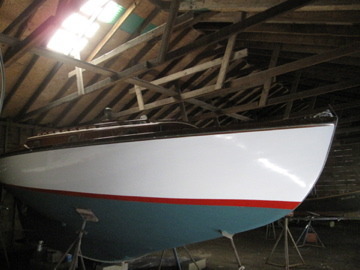
Springtime for wooden boat owners. Welcome to a world of sanding, painting, and varnishing. In past blog posts I have offered tips on the frustrating art of varnishing. Today, I delve into an important, but often ignored, varnishing subject: boxers or briefs?
This is, however, a writing blog, so please honor a momentary digression onto the subject of writing.
One of America’s great authors, John Cheever, composed many of his novels and short stories in the basement of his apartment building. Each morning, Cheever dressed in a suit, descended in the elevator to a windowless basement room where he disrobed, hung his suit on a hanger, and began writing. In the evening, he dressed and returned upstairs to his family. Cheever, we are told, worked in boxer shorts.
Every writer (and every unlucky soul who has the misfortune of living with a writer) knows that there is no greater curse than the unwanted interruption. Knocks on the door, children returning from school, and calls for supper are moments to recognize and enjoy in the normal person’s day. For a writer, these breaks in concentration are hell. Could it be, then, that Mr. Cheever’s boxer shorts were a clever way of fending off interruptions? Plausible, I’d say. Perhaps even brilliant.
This gets me back to the art of varnishing. Endless hours of sanding. Flawless applications that nonetheless lead to drips and sags. Dust that gets kicked up and settles onto the final coat. It’s a frustrating endeavor that requires quiet and concentration.
In addition, when varnishing, any one of the three following events are likely to occur:
1) The owner of the boat kept alongside your craft shows up with a belt sander
2) A old gent shows up to ask you when your boat was built, the answer providing a quick segue into an extended tale of his life on boats
3) A Fed Ex driver who can’t find slip B-17 wanders in and starts up a young man’s tale of the boating life
It will happen. Every time. I assure you.
Several years ago I realized that I achieved better varnishing outcomes if I worked in a pair of shorts and a tee-shirt. In some cases, this was because my other clothes carried dust that found its way to the wetted surface, but I also realized that I was less likely to catch a sleeve or pant leg on the surface. The interruptions, though, continued.
Until I recalled Cheever.
Whether you choose tighty-whities or boxers, you’re going to cut down on the number of interruptions when you work in your undies. As soon as those well intentioned interlopers enter the shed they’ll do a 180 and flee the guy who is crawling around his boat in nothing but is skivvies and a brush in his hand.
Of this, I am certain.
by John Urban
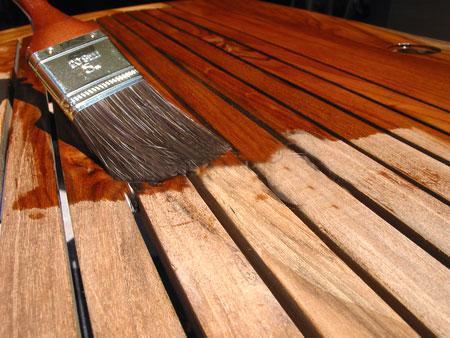
Share on Facebook
May 22, 2014
Did I say that aloud? (or why you shouldn’t use voice recognition apps in public.)
C.E. Grundler
They say you should always make time to write, but sometimes it’s a matter of finding time not to write. As I’ve mentioned in the past, I have a collection of muses that, once they’re on a roll, have no ‘off’ switch. They bombard me relentlessly with ideas , day and night, with no regard for where I am or what I’m doing. In the past, I’d get frustrated if I couldn’t transcribe these moments of inspiration, but now that I have Evernote, that’s no longer an issue. Writing has become a 24/7 endeavor, no longer limited to specific hours or ‘ass in chair’ time. This simple (and free, unless you go deluxe) app truly has freed me to write when and where ever I chose. Evernote runs on Apple and Android phones, as well as all computers, and syncs so seamlessly that when used in combination with Scrivener, it makes this process of herding cats otherwise known as novel writing infinitely easier. In fact, it’s Evernote that made me make that final jump into the realm of smart phones, and other than the random phone call or text, Evernote is pretty much my phone’s primary raison d’être.
Simply put, Evernote is my memo pad, my idea collection box, my reference file, and I would be lost without it. My phone is always close at hand, and now, none of my brilliant or less than brilliant ideas escape me. Inspiration hits while I wait in my car for a freight train to pass, and by time the gates rise and I’m back in gear, I’ve already recited a terrible chapter into my phone. (NOTE: Voice recognition can be a bit off at times, which is why the last sentence read ‘terrible chapter.’ I can’t figure what I actually said, though terrible might be an accurate description, so we’ll go with that.) Trips to the grocery store, which should take me 20 minutes, often stretch over an hour. Eventually I return home with eggs, cold cuts, and another 1,000 words that I can pluck from Evernote and drop into Scrivener.
A word of caution, though. Once you get accustomed to the voice recognition feature, it becomes a habit that can backfire if you aren’t careful. It’s highly amusing at those times when, in a rush to get a thought down, I forget myself, pull out my phone, and start gleefully describing in graphic detail the way I want someone to die. Discussing murder plots with your phone as you peruse the produce can make your fellow shoppers rather uneasy, especially if they believe there is someone on the other end of that conversation. And when I’m wearing my bluetooth, buried beneath my hair, it looks more like I’m talking with a voice in my head, though watching my fellow humans react to that concept ultimately falls under the category of ‘research’. It’s interesting to see the way my fellow grocery-gatherers will abruptly back away, regarding me uneasily, though not once has anyone notified security or called the police. Remember: there are really only two kinds of people who spend their days thinking of creative ways to kill random human beings — mystery writers and serial killers. In public, texting violent passages into Evernote is far less likely to create misunderstandings.
The last year thoroughly derailed me, and it’s taken some time to get back on track. Now that this train is moving again, with the noisy muses at the throttles and the twin engines of Scrivener and Evernote keeping things rolling along, it’s a non-stop ride until I hit “THE END”.
Share on Facebook
May 16, 2014
Where is home?
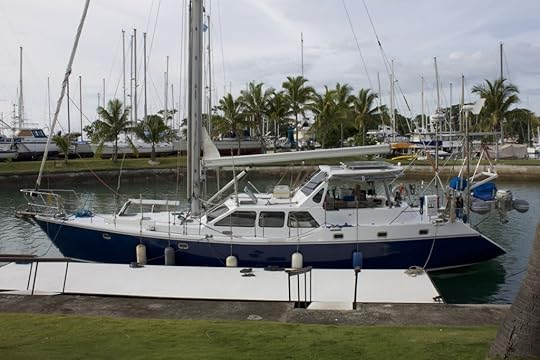
Learnativity at Vuda Point Marina in Fiji
by Christine Kling
Wikipedia says, “A home is a dwelling-place used as a permanent or semi-permanent residence for an individual, family, household or several families in a tribe.”
I guess for most people that question is an easy one, but it hasn’t been so for me for most of my life. It’s not a question of “where.” People who live aboard boats don’t see home as a place since our homes are mobile, and I’m sure I’m not the only liveaboard who has driven home to wrong marina or boatyard on occasion. For a liveaboard, the question is often what is home?
For the last 8 years, my home has been TALESPINNER, my little Caliber 33 sailboat. I bought her in 2006 after having only been a boating wife and first mate. I started then to learn how to captain a boat all on my own. There was quite a learning curve to that, and my little boat and I went through lots of adventures as I figured out how to singlehand her. I’ve lived in other places and stayed on other boats, but TALESPINNER was home. I wrote most of both Circle of Bones and Dragon’s Triangle sitting at the little typing table I had built specifically for that purpose. I was surrounded by my books and my few cherished possessions that fit on my little boat. I was at home.
Last fall my life changed. I met someone — through this blog, actually — when he commented on one of my posts. We started chatting online, then started to Skype and in December, I flew to Fiji and sailed with him up to the Marshall Islands aboard his boat, LEARNATIVITY, the 52-foot steel motor sailor pictured above. Wayne and I left LEARNATIVITY on a mooring in the lagoon at Majuro atoll, and we’ve been on a research and travel trip for the last three months. I don’t think we’ve stayed any place longer than a week, but as I spent more time with him, I began to feel more and more “at home” no matter where we were. Last month Wayne asked me to marry him on a hillside above the Maltese fishing village called Marsaxlokk, and I said “Yes!” So, now LEARNATIVITY will be my new home, and I’m here in Florida preparing to move out to the Marshall Islands.
This means I’ve been trying to move all my things off TALESPINNER in preparation to putting her on the market. I’ve been struggling with the process and feeling more than a little overwhelmed. It seemed like my boat carried very little stuff when I moved aboard from a two bedroom condo eight years ago. Now it seems like she’s a veritable little cargo ship! Where did I get all these tools and all this food? Did I really have that many books on board? What am I going to do with all this stuff? There is only so much that I can ship or carry out to the Marshall Islands and with each item I have to decide where it goes.
And like any boater, I had a very long To Do List of stuff I was going to get done as soon as I finished my book. I’ve got lots of projects half-finished and I bought things to complete other projects. That boat was my life and I’m finding it very difficult to just let those projects go. I go out to the boat and I sit and look around and I’m useless. The work isn’t getting done.
That’s why I decided to write about home today because I need to come to terms with this. I wrote about this struggle to a good friend yesterday, Matt aboard the sailboat MIKAYA, and he wrote back some wise words. “As I get older, I realize I can be happy and sad over the same thing, at the same time.” And that was just it. I do feel sad about leaving my intrepid little boat that taught me so much, but at the same time, I couldn’t be happier about this change in my life. The future for me has never looked brighter.
So now I’ve come to think of home not as either a place or a thing like a boat. Home is a feeling. I get that feeling when I am surrounded by the things and the people I love; when I can relax and feel be inspired. I take home with me, inside me and I’m taking it — and a mountain of baggage — out to LEARNATIVITY.
Fair winds!
Christine
Share on Facebook
May 15, 2014
Do you suffer from NMS?
C.E. Grundler
WHAT IS NMS?
Noisy Muse Syndrome (NMS) is a psychiatric condition where the individual frequently hears voices in their head, often offering the most perfect dialog and passages at the most inconvenient times. NMS patients are often misdiagnosed as suffering from Dissociative Identity Disorder (DID)or schizophrenia, but this is not the case. A specific relationship between NMS and fiction writers has been posited several times, with various clinicians noting significant overlap between symptoms and patient behaviors. NMS is not life-threatening, but can severely disrupt normal life in patients.
WHAT CAUSES NMS?
NMS is often brought on by a nagging plot point or passage that a writer simply can’t pin down. The longer this condition goes untreated, the more likely the writer is to have an eventual flare-up of NMS. Triggers include newspaper headlines, song lyrics, movies, books, television, the internet, and random overheard conversations. NMS can hit at any time, but is particularly prone to strike when sleeping or attempting to sleep, showering, driving, or during mundane and routine tasks such as shopping, cooking, and cleaning. Alcohol has been shown to worsen symptoms.
HOW CAN I TELL IF I HAVE NMS?
Symptoms may include insomnia, inattentiveness, forgetfulness, and an overwhelming, urgent compulsion to write on any and every surface that doesn’t move fast enough. Symptoms are said to vary over time.
WHAT ARE THE RISK FACTORS?
Caution must be taken while operating heavy machinery or power tools, as Noisy Muses have little concern for personal safety, and injuries have been shown to aggravate the condition.
HOW CAN I TREAT NMS?
At this time there is no cure for NMS, though regular doses of Writer’s Block have been found to alleviate symptoms for extended periods. However, side effects of Writer’s Block are frustration, short-temper, loss of appetite, and even worsening insomnia. Many writers suffering NMS report that the cure is worse than the disease, and prefer to manage this condition by behavioral modification such as a steady regiment of writing down each and every idea the moment it starts monopolizing the brain.
Share on Facebook
May 12, 2014
Bruins – Canadiens and much more
by John Urban

As I write this, the Boston Bruins and Montreal Canadiens are battling through Game 6 of the second round of the Stanley Cup playoffs. I know their sweaters well, and I have watched these teams compete since I was a young boy.
Some people find hockey to be too violent and others say it’s hard to track the puck. Nobody, though, can dispute the game’s speed. A top pro can get up to 30 MPH zipping down the ice. Even an over the hill hacker like me can still feel the joy of blazing around a hockey rink on sharpened steel edges.
In an era of advanced technology, the skate blade is fairly elementary. In the same way, the lines, blocks, and tackle of a sailboat are simple. When sailing, it’s easy to forget the technical beauty of using a winch to haul in a line that alters the angle of the sail allowing you to accelerate. America’s Cup sailors took this to a whole new level last year, but even us old wooden boat Neanderthals can have some fun getting from here to there.
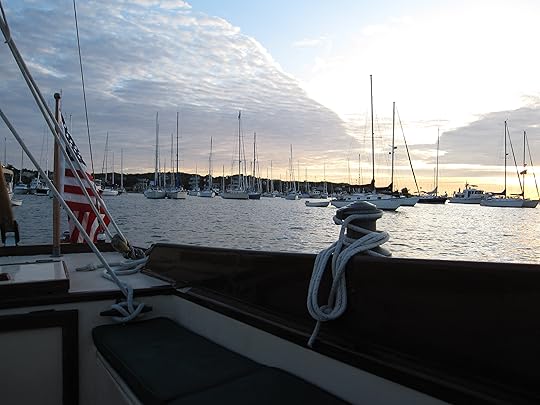
The leather skates and wooden sticks of my youth have been replaced by advanced materials, and even our 1946 wooden sloop had the advantage of Dacron sails and electronics. Still, it seems low-tech is part of my life. One could even say that writing is my lowest tech endeavor. But how untrue that is.
Not that many years ago when this blog started, e-books were considered to be a marginal part of the book business. And I remember going to several writers’ conferences where publishers would talk about the limited future of e-books. Today?
Cloud computing fuels Amazon. E-Ink technology illuminates Kindles around the globe. Electronic money transfers reward authors within days of their sales. Here at Write On the Water, electronic book alerts drive Christine Kling’s new mystery to the top of the best seller list and computer algorithms keep the sales high on her fine new novel, Dragon’s Triangle. And if you’re without an e-reader, your smartphone downloads a book on your Samsung Galaxy or Apple iPhone right where you are.
Tonight’s Game 6 outcome means Bruins and Canadians will play later this week. In the meantime, I’ll sand and varnish a few hatches I took off the boat this weekend. Not much change on either front over the years. But as for writing? The technology revolution continues, and hats off to the many writers and readers who are riding this amazing wave.

Share on Facebook
May 9, 2014
Turkish Delight

by Christine Kling
We have been in Turkey now for about 10 days and there are so many ways in which this country is a surprise. I’m not really sure what I expected to find, but it certainly wasn’t this very beautiful, prosperous, tolerant first-world country.
We took a ferryboat from the Greek Island of Rhodes across to the port of Marmaris and then traveled about 4 hours by bus south to the town of Finike. There we met up with Terry and Carol on board Common Sense and spent the next 6 days with them. On that first bus ride, I marveled at the pine-covered hills and the large comfortable-looking houses with lovely red tiled roofs. It’s not that I was expecting a desert, but I had no idea the geography was so mountainous and the land so forested. This country is gorgeous!
On the boat, we had a great time traveling to an anchorage inside the Kekova Roads where we dinghied around to Kale Köy, a tiny village where we hiked up to the ruins of a Crusader Castle. This wasn’t even something that merited more than a sentence in the Lonely Planet Guidebook, but it was extraordinarily beautiful. Spread all over the hillsides were 3000-year-old tombs that barely earned a second glance from the locals. That was when I began to realize that to really get a feel for Turkey, I would need much more time than the two weeks I had allowed. Wayne and I agreed that we hope to get Learnativity here to Turkey some day to sail this coast again.
We said good-bye to our friends on Common Sense in the village of Kas and we boarded another bus for a trip to Marmaris. We stayed in a little budget hotel overlooking the square and had a grand time walking the streets of the town. We found two chefs serving up free kebab on the beach and crowds of mostly Turkish people out for an evening promenade. When we settled into a little backstreet restaurant and ordered a sumptuous dinner of mixed grill chicken, beef, lamb and meatballs with potatoes and peppers and tomatoes, washed down with a bottled of red Turkish Shiraz , we talked to the waiter and asked him if it was some sort of holiday. He cocked his head and thought. “No, no holiday.” Wayne said, “But it’s only Tuesday and there are people picnicking and there’s free food on the beach and so many people are out.” The waiter shrugged and smiled. I guess that’s just normal for Turkey.
In Marmaris we found a long street with nothing but marine businesses, including a very large West Marine store. The marinas there must have had several thousand boats in total, and we visited one marina and boatyard with a beautiful new looking 100-ton Travel Lift.
The biggest surprise of all, however is the number and size of these local Turkish boats called gulets. We are now in Bodrum and we have walked the docks here with our mouths agape. There are literally hundreds of not thousands of these enormous luxury yachts. They are all similar in design, but all different – very clearly NOT mass produced. Most of them are planked wood boats, but some are cold-molded epoxy wood hulls, some are steel and some aluminum. At first I thought that they were all in the charter business and I didn’t see how on earth there could be enough business to support them all or to make the investment pay off, but now it seems that many of them are privately owned yachts. Whether or not this is your style of boat, any yachtsman can see how stunning these things are. The bright work, custom stainless steel work, the electronics. These things have satellite systems and all the top end electronics and electric and hydraulic sail management systems making them capable of going anywhere in the world, and here they all sit tied to the dock in Bodrum. To get an idea of the opulence, one of the bigger ones has a 115-horse Evinrude on the back of their enormous center-console dinghy hanging in davits. It’s a wild scene.
From a thriller writer’s point of view, this country is an embarrassment of riches. Everywhere I turn I see someplace that would work for a chase scene, a murder or hidden treasure. The problem won’t be trying to come up with ideas – it will be having to choose!
We only have two days left in Turkey, and we are boarding an overnight bus tonight for the 12-hour trip to Istanbul. It is going to take me a good long while to digest and process all I have seen and to go through the more than 1000 photos we have taken. But one thing I know for sure is that I never would have been able to get at a real picture of Turkey if I hadn’t made this trip. You’ve gotta love this research stuff, but starting next week, the real work starts!
Fair winds!
Christine
Share on Facebook
May 8, 2014
My writing secret…
C.E. Grundler
On occasion, I’ve been asked what my secret is. How do I do it? What’s the secret to writing a novel?
Well, here it is.
Yup. Good old fashioned Glad Cling Wrap, available in a supermarket near you.
Seriously. That’s it, or at least, a vital component. Allow me to explain.
I’ve often joked that I began writing because if I didn’t write everything down, I’d never remember anything. It’s one of the quirks I’ve endowed upon my memory-challenged protagonist, Otto Hammon, but the truth is, I’m a reminder note and list making junkie. The wall over my desk is splattered with a multitude of Post-Its, and they frequently find their way throughout my home, dotting the microwave door, TV screen, and even the key rack with an array of neon colored squares, and my phone is filled with an ever changing collection of digital notes. Why? I’d like to think it’s because I have more things bouncing around my brain than my attention span can –
– SQUIRREL!!!–
What was I saying? (And this is where all these notes come in handy. I can backtrack and get my trains of thought running in the right direction.) The bottom line? I’m not that good at multi-tasking. I’m much too easily –
– SQUIRREL!!!–
– distracted. (As for the ‘squirrel’ reference, if you’ve seen the Pixar movie, UP, you know exactly what I’m talking about. And if you haven’t… why not?!)
As I was saying… uhm… what was I saying? Oh, yeah. Glad Wrap. Just bear with me. I’m far too easily distracted, and have concluded that multi-tasking is best left to the professionals — with one exception. I’m still not going for any medals in the ‘Walk down the street and chew gum’ competitions, but there are two things I’m damned and determined to get completed, and I’ve discovered a way to keep both plates simultaneously spinning. All it takes is a reasonably squirrel-free environment, and a few pieces of Cling Wrap.
Yes, I can, indeed, write a novel AND restore an aging trawler AT THE SAME TIME! What it requires is the ability to type in latex gloves and a Tyvek suit, one work-abused plastic table, one laptop, some Cling Wrap, and a whole lot of insanity, both in regards to the writing and the boat. (BTW, that Cling Wrap trick works on any surface you’d like to keep resin-free.)
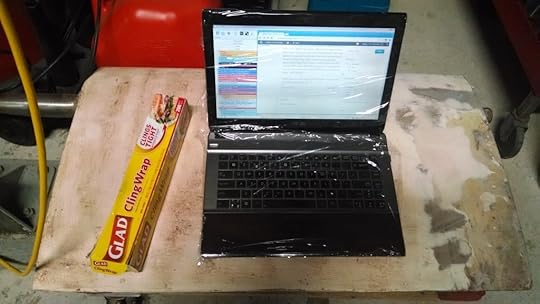
That’s no table — that’s my rudder.
Here’s my method. Work on boat. Reach a pre-designated stop point, go to computer, and write. If I find myself staring blankly at a blinking cursor, step away from the computer and resume sanding/scraping/prying/rebuilding, which usually results in my muses bombarding me with inspiration. Murphy’s Law dictates that this most often occurs while my gloves could double as fly-paper, thus the Cling Wrap Computer Condom. Write, sand, write, mix resin and lay up more glass, write. It’s amazing just how much boat work and writing I’ve gotten done using this method. In the far corner of the far shed, distractions and interruptions are few and far between, not to mention the absence of any internet connection, not that I go online all that much these days. And while a number of nesting birds and a few feral cats reside within the shed, I’ve yet to see a single – SQUIRREL!!!–
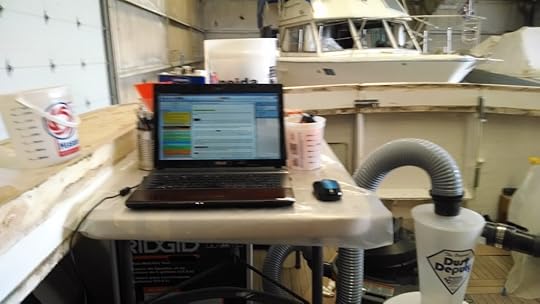
The view from my desk. No epoxy today, so I’m doing some unprotected writing.
Share on Facebook










